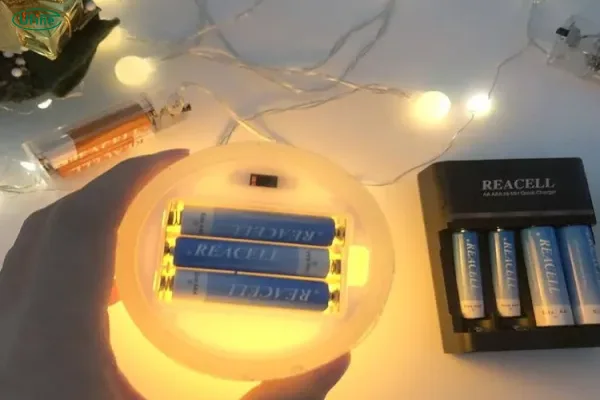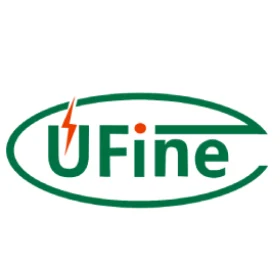
- Part 1. The need for portable power in LED strip projects
- Part 2. LED strip voltage and power consumption
- Part 3. Types of batteries used for LED strips
- Part 4. Choosing the right battery based on LED strip type
- Part 5. Battery capacity (mAh or Wh) and runtime calculations
- Part 6. Rechargeable vs. disposable batteries: pros and cons
- Part 7. Voltage regulation and battery safety
- Part 8. Portability vs. power: trade-offs in battery selection
- Part 9. Battery management systems (BMS) for LED strip power packs
- Part 10. Common mistakes to avoid when powering LED strips with batteries
- Part 12. Selecting the optimal LED strips battery for your project
- Part 13. Ufine Battery: reliable custom lithium batteries for LED strips and more
Part 1. The need for portable power in LED strip projects
LED strips are incredibly flexible in their applications, and many people want to use them where traditional plug-in power isn’t practical — think of places like:
- Remote locations without outlets
- Wearable electronics or costumes
- Temporary event setups
- Car interiors or bike lighting
- Art displays and signage
In all these cases, a battery-powered LED strip becomes the ideal solution. But not all batteries are created equal, and choosing the wrong one could result in flickering, short runtime, or even damage to your LEDs.
Part 2. LED strip voltage and power consumption
To choose the right battery, you first need to understand your LED strip’s voltage and wattage requirements.
Most LED strips come in the following voltage variants:
- 5V (common in addressable LEDs like WS2812B)
- 12V (common for standard white or RGB LED strips)
- 24V (used in longer runs for more stable voltage over distance)
Your battery must match this voltage or include a voltage regulator. Using a 12V battery on a 5V LED strip without regulation could permanently damage it.
Next, calculate power consumption:
- Watts (W) = Voltage (V) × Current (A)
- Example: A 12V LED strip drawing 1.5A = 18W
This helps determine the battery capacity needed to achieve your desired runtime.
Part 3. Types of batteries used for LED strips
There are several types of batteries suitable for powering LED strips, each with distinct advantages and trade-offs:
🔋 Alkaline (AA, AAA)
- Readily available, low cost
- Not rechargeable
- Limited current output
- Suitable for low-power 5V strips for short use
🔋 NiMH Rechargeable
- Rechargeable alternative to alkaline
- 1.2V per cell; requires multiple in series
- Moderate capacity (~2000mAh per AA cell)
🔋 Lithium-ion (e.g., 18650, 26650)
- High energy density
- 3.7V nominal (typically 7.4V or 11.1V packs)
- Rechargeable, long lifespan
- Ideal for medium to high power LED strips
🔋 Lithium Polymer (LiPo)
- Very lightweight and compact
- Available in custom shapes and sizes
- High discharge rates and capacity
- Common in drones and wearables
🔋 LiFePO4
- Safer and more stable than standard lithium-ion
- 3.2V per cell, long cycle life (~2000+ cycles)
- Excellent for long-term, high-reliability use
🔋 Lead-Acid
- Heavy and bulky
- Used for 12V automotive and industrial power
- Suitable for large-scale or stationary LED installations
Part 4. Choosing the right battery based on LED strip type
Different LED strips demand different power sources. Here’s a simple breakdown:
LED Strip Voltage Recommended Battery Type Notes 5V USB Power Bank, LiPo Compact and portable 12V 3-cell Li-ion, LiFePO4, Lead-acid Use voltage-matched packs 24V 7-cell Li-ion, Regulated DC High-output setups
If you’re using addressable RGB LEDs, the current draw can be high, especially when showing bright white or full-color animations. Plan for at least 60mA per LED at full brightness.
For simpler white strips, current draw is usually much lower — often 4–5W per meter.
Part 5. Battery capacity (mAh or Wh) and runtime calculations
Choosing a battery isn’t just about voltage — you also need to consider capacity, which affects how long your LED strip will stay lit.
Two ways to measure battery capacity:
- mAh (milliamp-hours) — common for smaller batteries
- Wh (watt-hours) — better for power calculations
🔹 How to calculate runtime:
- Convert battery capacity to watt-hours:
- Wh=(mAh×V)÷1000Wh = (mAh × V) ÷ 1000Wh=(mAh×V)÷1000
- Divide by LED strip power consumption:
- Runtime(hours)=Wh÷StripPower(W)Runtime (hours) = Wh ÷ Strip Power (W)Runtime(hours)=Wh÷StripPower(W)
Example:
- Battery: 12V, 3000mAh = 36Wh
- LED strip: 12V, 12W
- Runtime = 36 ÷ 12 = 3 hours
The higher the mAh (or Wh), the longer your lights will last.
Part 6. Rechargeable vs. disposable batteries: pros and cons
While disposable batteries are easy to use, they aren’t ideal for sustained LED usage.
✅ Rechargeable Pros:
- Lower long-term cost
- Environmentally friendly
- Higher capacity options
- Recharge after every use
❌ Disposable Cons:
- Limited energy
- High waste production
- Not ideal for high-draw LEDs
If you’re using your LED strips regularly or for long durations, rechargeable lithium batteries like 18650 or LiPo are the best choice.
Part 7. Voltage regulation and battery safety
LED strips are sensitive to overvoltage and undervoltage. That’s why you may need a voltage regulator or DC-DC converter to protect both your LEDs and your battery.
Some tips:
- Use a step-down (buck) converter if your battery exceeds your strip’s voltage
- Use a step-up (boost) converter if your battery voltage is lower
- Add a fuse or protection circuit to avoid shorts and overheating
Safety is especially critical when working with lithium batteries. Overcharging or discharging below safe limits can cause swelling, fire, or explosion.
Part 8. Portability vs. power: trade-offs in battery selection
The perfect LED strip battery is a balance between weight, size, and runtime.
Lightweight Options:
- LiPo packs
- USB power banks
- 18650 battery holders
Heavy-Duty Options:
- Lead-acid batteries
- Large LiFePO4 packs
- Battery banks with external regulators
For wearable or mobile projects, prioritize small, high-capacity lithium packs. For stationary use, like outdoor signs or art installations, larger batteries with longer runtimes may be more suitable.
Part 9. Battery management systems (BMS) for LED strip power packs
When using lithium-ion or LiPo batteries, a Battery Management System (BMS) is essential.
A good BMS protects your battery by:
- Preventing overcharge and over-discharge
- Monitoring cell voltage balance
- Managing charging currents
- Protecting against overheating and short circuits
Many commercial battery packs come with built-in BMS. If you’re building a custom pack, make sure to install a reliable one — it can prevent costly damage or even fires.
Part 10. Common mistakes to avoid when powering LED strips with batteries
Avoid these common pitfalls to ensure safe, efficient operation:
- ❌ Using a 12V battery for a 5V strip (without regulation)
- ❌ Choosing a battery with too low current output
- ❌ Ignoring capacity: battery dies too quickly
- ❌ Not using fuses or voltage regulators
- ❌ Overcharging or draining lithium cells below 3.0V
Always double-check your wiring and use a multimeter to verify voltage before connecting your LED strips.
Part 12. Selecting the optimal LED strips battery for your project
Selecting the right LED strips battery requires a careful balance of voltage compatibility, capacity, size, and safety. Understanding your LED strip’s power draw, runtime needs, and application context will guide you toward the most effective battery choice — whether it’s a sleek LiPo pack for a wearable project or a robust LiFePO4 system for permanent lighting.
If you’re designing a custom lighting system or need batteries that meet specific form factors, voltages, or temperatures, working with a professional battery manufacturer is your best bet.
Part 13. Ufine Battery: reliable custom lithium batteries for LED strips and more
Ufine Battery is a leading custom lithium battery manufacturer based in China, offering OEM and ODM solutions for a wide range of applications, including LED lighting systems.
We provide:
- Lithium polymer, LiFePO4, 18650, cylindrical, and ultra-thin batteries
- Custom configurations for voltage, capacity, shape, and temperature range
- High-rate and high-temperature options suitable for advanced lighting projects
Whether you’re building a commercial product or a DIY installation, Ufine Battery can design and supply the right power solution. Reach out to our team to explore your options and request a custom quote.
Related Tags:
More Articles

Big Square Battery Safety Standards You Must Know
Learn key safety standards for big square batteries to avoid fire risks, shipping delays, and compliance issues in EV, industrial, and energy storage projects.
Big Square Battery Applications in Solar & Industrial Equipment
Big square batteries deliver high capacity, stable output, and long life for solar, industrial, and backup power. Explore key uses and advantages.
Big Square Battery vs Cylindrical Battery: Complete 2025 Guide for EVs, ESS & Industrial Devices
Choosing the right battery is key for designers and engineers. Compare big square vs cylindrical batteries to find the best fit for your application.
How to Choose the Right Big Square Battery for Your Device?
If you’re choosing a big square battery for EVs, solar, or mobility devices, this guide helps you pick the right solution for real-world needs.
Big Square Battery Complete Guide: Types, Uses & Buying Tips
If you are choosing a big square lithium battery for EVs, solar, RVs, or AGVs, this guide helps you select the right NMC, LFP, or LTO solution with examples.




